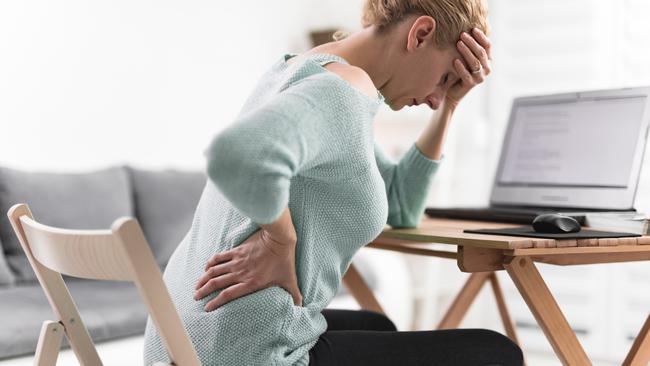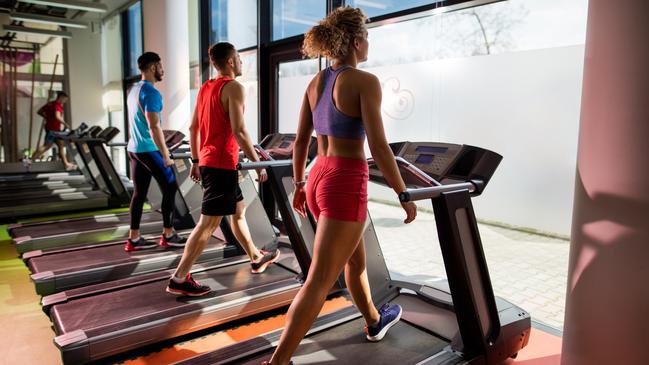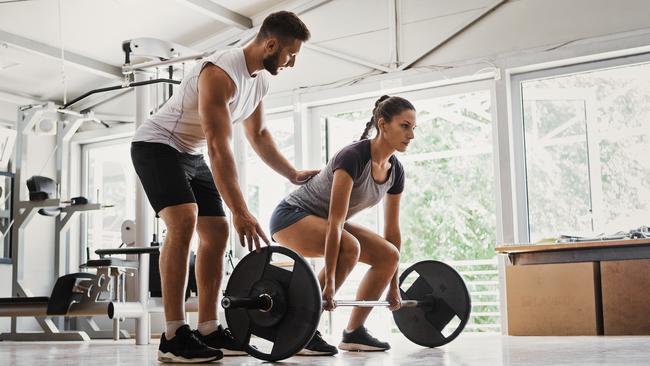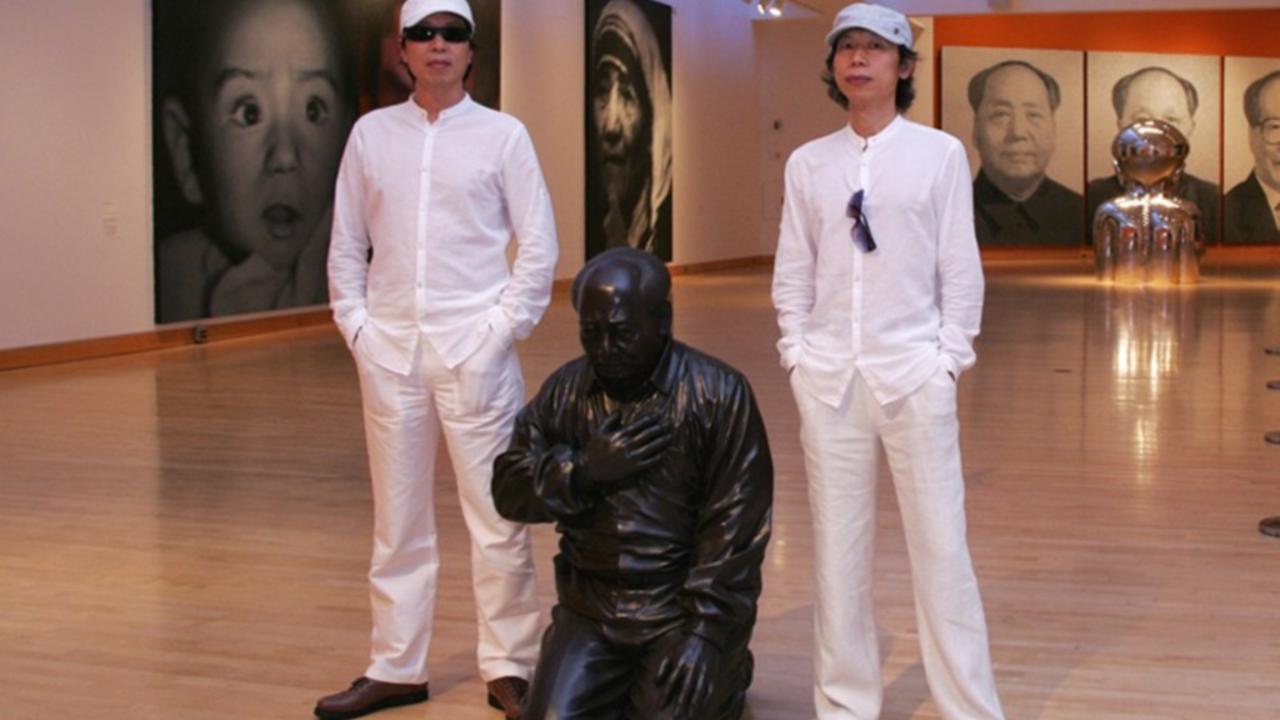Eight hacks that will help to banish back pain
Cutting five minutes from each hour you spend seated is effective - but there are other tricks worth knowing.

Low back pain causes misery for up to 60 per cent of the UK’s adult population at some point in their lives, yet many of us don’t know how best to deal with it. “Myths and misconceptions about back pain and its treatments are so widespread that often people are not doing the things that could help to alleviate their problem,” says Fiona Wilson, a professor in physiotherapy at Trinity College Dublin and a leading expert on back issues.
A Lancet review on the global low back pain epidemic reported that the condition is now the leading cause of disability worldwide, and while most people with new episodes of back pain recover quickly, two thirds of these will have a recurrence within 12 months. Lifestyle factors, such as smoking, obesity and too little physical activity, are strongly associated with continuing episodes and, for all the gadgets and supplements you can buy, it is usually the simplest strategies that bring the best long-term results.
A new study by researchers at the University of Turku and Turku University Hospital in Finland, published in the BMJ Open, found that midlifers who reduced daily sitting time prevented back pain from worsening over six months. People with lower back issues often have excessive fat deposits within their back muscles, as well as impaired glucose metabolism which predisposes them to pain, and although the team did not show that less sitting led to direct improvements in back muscle composition or metabolism, it did help to relieve and prevent recurrent pain over time. “Our participants were quite normal middle-aged adults who sat a great deal, exercised little and had gained some extra weight,” says the physiotherapist Jooa Norha, one of the paper’s authors. “These factors increase not only the risk for cardiovascular disease, but also for back pain.”
What else is going to help to banish back pain for good?
Stand up and move for five minutes every hour
In the Finnish study, participants gradually reduced their sitting by 40 minutes a day over six months. Since almost three quarters of British middle-aged adults spend more than eight hours sitting each day, this equates to getting up for five minutes every sedentary hour. Just being out of the seated position will help your back, but Norha states in the Turku study that “it is important to note that physical activity, such as walking or more brisk exercise, is better”.
Walk for 30 minutes at least five days a week

“Building up with short bouts of 5-10 minutes more walking every day is one of the best things you can do for your back,” Wilson says. “Your spine is meant to be mobile, so moving about in this way is good for it.”
For a recent Australian study of 700 adults with lower back pain, published in the Lancet, researchers at Macquarie University’s Spinal Pain Research Group asked about half of the participants to start daily walking on five days a week while the others did no extra activity. Walking programmes were gentle to start with, but most participants were managing an average of 130 minutes a week, or 26 minutes on each of their five allotted days after three months.
After three years, results showed that the regular walkers had fewer bouts of debilitating pain compared with the control group, and longer periods without a recurrence.
Do squats, lunges and deadlifts

Pilates has gained a reputation as the best form of exercise for back pain prevention, but other types of activity are just as effective. “For years we went down the route of promoting core stability exercises, such as those in Pilates, but a significant review in The Lancet concluded that no single form of exercise is better for back pain than another,” says Wilson.
Research by Daniel Belavy, an associate professor at the Institute for Physical Activity and Nutrition at Deakin University in Australia, published in the British Journal of Sports Medicine, found Pilates was helpful for some people with low back pain but not for others, and overall was not superior to other types of exercise.
Wilson says that performing lunges, deadlifts and squats at home is a great way to boost back health. “Fundamental strengthening exercises like these will strengthen muscles around the hips and in the core, leg, buttocks and back that are important for prevention of back pain,” she says.
Add weights as you get stronger
The human spine is designed to withstand heavy loads and becomes deconditioned when not loaded on a regular basis. “Now that we don’t lift and carry as much as our ancestors, lifting weights is an excellent way to ensure the huge muscles in the back stay strong,” she says.
For a study published in the journal Sports Science, Medicine and Rehabilitation, people with low back pain were prescribed a supervised whole-body resistance programme consisting of squats, bench presses, deadlifts and a weighted row twice a week for four months. Researchers tracked pain and strength levels of the participants and, by the end of the study, they reported improved pain levels and daily functioning, boosted energy levels and better sleep patterns as their low back problems improved.
“Where people go wrong is in lifting too heavy too soon,” Wilson says. “That can be bad for the back, so add weights in small increments.”
Improve your sleep habits
Good-quality sleep helps to reduce stress hormones that can cause tension in back muscles, and also releases anti-inflammatory compounds that help to relieve back pain. “When your body is not getting enough sleep it creates an inflammatory response, so make sure you establish a good sleep schedule,” says Sam Bhide, a physiotherapist and spokeswoman for the Chartered Society of Physiotherapy.
A recent review of studies published in the journal Sleep found that “worse baseline sleep was associated with more intense back pain and a lower likelihood of recovery from low back pain over time”. Aim for 7-8 hours a night and stick to a strict routine.
Don’t obsess about MRI scans
An MRI scan will not necessarily identify a cause of your issue. “In rare cases or if you have accompanying leg pain, there may be something more serious that requires medical referral for a scan,” Bhide says. “But these account for just 2 per cent of back pain cases, so if your physio or GP doesn’t recommend it, you don’t need to pay privately for a scan.”
About 70 per cent of adults will have some disc degeneration, increasing to 80 per cent of those aged 50 plus, and healthy people have changes in their spine even on a daily basis. Studies, including one in the journal Spine, have shown that having MRI scans when not necessary can cause false alarm in people, adding to the stress that can make the suffering worse.
“You do not need an MRI scan to validate your back pain,” Wilson says. “Global guidance for the treatment of low back pain published in The Lancet clearly stated that routine imaging is not recommended and does not help with management of the condition.”
Lose weight slowly
Carrying just 1lb of excess weight adds up to 4lb (1.8kg) of extra pressure to your spine. “Our skeletons are designed to carry our body weight around, but struggle when we gain too much weight,” Bhide says. “In terms of rehab, the less excess weight you have the better.” Losing a lot of it too quickly can backfire though, as it can cause a shift in posture, putting strain on back muscles and the spine. The NHS says that losing 1-2lb (0.9kg) a week through diet and exercise is a healthy target.
Don’t spend too much money on a chair for your home office

“There’s no strong evidence at all that the type of chair you sit on will prevent or heal your back pain,” Wilson says. “What makes the difference is not the seat itself or even how well you sit on it, but how often you move on and out of it.”
In the recent BMJ Open study, Norha stressed that switching between postures is more important than trying to maintain a perfect posture. Wilson says there is “no perfect sitting position” and an uncomfortable office chair is often a better option than a luxuriously cushioned seat as you are more inclined to fidget and move around in it.
“Sitting in one position for a sustained time is worse for your back than shuffling about and occasionally slouching,” she says. “Your spine likes to move through a range of positions all the time, so even if you are stuck at your desk, make sure you change your seated position as often as possible.”
The Times





